
Real Life in the Past and Real Life Now
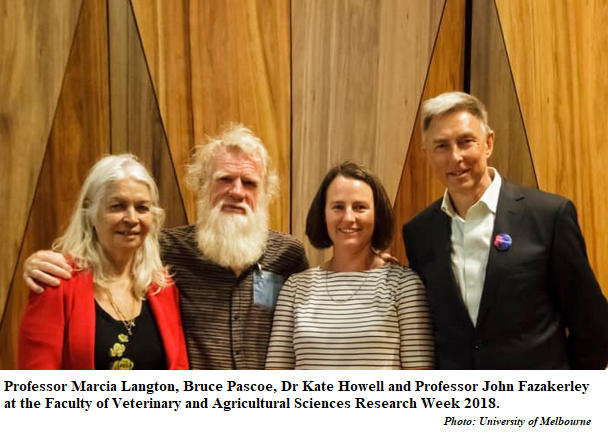
It was as I sank deeper into the study of the problems thrown up by our initial reformist programme that I entered the second stage of my concern, in which I could see in the small field of New Guinea the great drama of the disintegration of traditional cultures, and the groping for the means of creating a new social order in the modern world. It became for me a period of intellectual crisis, because every question about the nature of man and society was opened up. —James McAuley, “My New Guinea”
To write about these two books by Peter Sutton, and Bruce Pascoe’s Dark Emu, is to risk inflammatory outcomes. Most readers of Dark Emu, The Politics of Suffering or Farmers or Hunter-Gatherers? bring assumptions about what they will read in the texts or find acceptable. Some will be driven by prejudice, some by anger or grievance, some by academic concerns, and some will be outraged no matter what. Sutton brings deeply informed distress over his long experience that a once viable and stable Aboriginal community was falling apart with fatal consequences for far too many. In The Politics of Suffering that experience shaped a research-driven life to identify where failures had happened and how best to account for personal and communal disasters.
Sutton states in his afterword to The Politics of Suffering:
The book’s central substance is a humanitarian issue, and not, at first blush, a political, nor an intellectual one … to go beyond the customary limits of scholarly accounts, which have so often drawn a veil over the extent of brokenness, anxiety and violence in the communities we purport to describe.
One of the wider issues that readers bring to these books may lie in philosophy or first principles embedded in the term “humanitarian issue” and whether there is a universal or even natural law domain in which value-determinants apply to all: or whether issues of nation or race or culture have impermeable boundaries. Some of these issues will inform social and political responses to perceived problems. I can float the terms “inertia” and “non-intervention” at this point. Problems may exist, a diagnosis be given, and still nothing be done, nothing thought possible. Reasons for inertia and inaction in the face of clearly described problems need to be discerned.
This essay appeared in a recent Quadrant.
Click here to subscribe
Science has grown by being mistaken or less correct and by knowing that it has been mistaken. Take the number of years that Aboriginal people have lived on the continent. A consensus of around 50,000 to 60,000 years derives from converging probabilities that include genomic or DNA studies along the lines of movement from the Africa exodus, and a history of carefully considered artifact discovery on this continent. We are helped by Keryn Walshe’s Appendix 1 to Farmers or Hunter-Gatherers? She begins with the conservative parameter, “There are relatively few archaeology sites in Australia that have been dated between 45 to 50,000 years old by more than a single line of evidence.” The reader is obliged to factor in how single and multiple lines of evidence may work, and what degrees of certainty can be applied to outlier results. Walshe raises the likelihood that termite activity can alter otherwise settled layers in a site, generating false readings for older dates. One must not be too keen to ignore the termite factor and embed mistaken conclusions.
Attitudes towards data that on some measure point to an outlier datum of 120,000 years must invite far more than a desire for it to be true if it is in fact going to overthrow and replace the 50,000-year marker. The consensus figure of around 50,000 to 60,000 years does not have to be proven, re-proven or refuted on every occasion. It serves as part of a settled narrative until clearly and absolutely overthrown. Outlier claims like 120,000 years must do a mighty amount of work, carry a huge burden of proof to supplant the consensus figure; and some of that onus probandi involves a rigorous methodology.
To fail to do that is to remain fanciful, or to live with the yarn and what is unprovable to a mainstream inquiry. The Scottish philosopher David Hume emphasised the close consideration of likelihood or probability as attached to any report; particularly but not only to reports of rare events or even miracles. Highly unlikely reports can be true of course, but all need the apparatus of truth-testing and rigour.
Sutton’s constant challenge to Pascoe’s work lies in Pascoe’s preferencing of the novel and unlikely and taking it to be normative. Sutton says that Pascoe substantially ignores materials that do not support his thesis or that render his thesis unlikely or not possible. In most respects I leave the reader to follow the details at this point.
Over the last two months I have closely read two books by Peter Sutton: The Politics of Suffering and Farmers or Hunter-Gatherers? Keryn Walshe contributes two of the thirteen chapters and one of two appendices in Farmers or Hunter-Gatherers?
Something positive is said about each of three terms in use for the people who lived on this continent for millennia prior to the arrival of the colony-building British: Old People, Aboriginal and First Nations. The books are not simply about the longer historical past. Both exhibit a diachronicity invaluable to present issues—some painful—and paths to their resolution. Both books display intimate, long-earned familiarity, even family connection and inclusion with Aboriginal peoples, and hard-earned knowledge of traditional language, vocabulary and customary behaviour.
Some nineteenth-century European uses of the term “nation” had political consequences that humanitarians see as problematic. Some uses of nation have played out in acts of violence, terrorism and warfare in the name of the pure state built on ethnic lines seen by some to be “natural” (a word with the same root), and in the forced migrations and re-organisations of people on the basis of allegedly “natural” identity markers. Linguistic or language markers were used to set, break and re-set political or state boundaries to align with supposed boundaries of language, religion, music, geographical features, and even eye and hair colour and shape and other morphologies such as skin type. That way separatism lies. Forced marches and the destructive and often fatal relocations of many peoples have been enacted as matters of course, many with disastrous consequences. Think German speakers, Turks and Greeks, India and Pakistan.
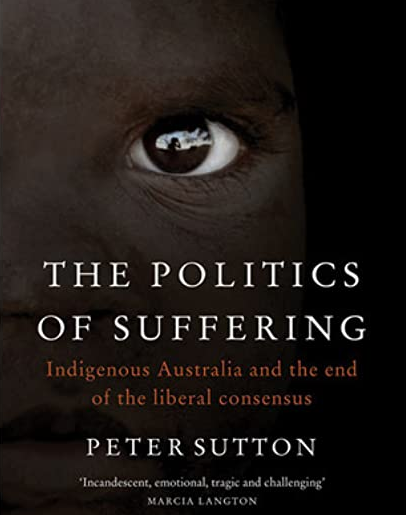 A proper evaluation of Bruce Pascoe’s Dark Emu now requires a reading of Farmers or Hunter Gatherers? Sutton’s earlier The Politics of Suffering demonstrates a hard-headed humanism combined with highly detailed, personal participation in first-hand knowledge of Aboriginal communities from 1970 to 2009 and at least in biographical terms is the foundation for his critique of Dark Emu. He knows traditional Aboriginal life to be other than Pascoe claims. What he knows is not undone by Pascoe’s narrative and methodology.
A proper evaluation of Bruce Pascoe’s Dark Emu now requires a reading of Farmers or Hunter Gatherers? Sutton’s earlier The Politics of Suffering demonstrates a hard-headed humanism combined with highly detailed, personal participation in first-hand knowledge of Aboriginal communities from 1970 to 2009 and at least in biographical terms is the foundation for his critique of Dark Emu. He knows traditional Aboriginal life to be other than Pascoe claims. What he knows is not undone by Pascoe’s narrative and methodology.
The Politics of Suffering shows one major origin for his scepticism and refutation of any claim that positions Aboriginal peoples as settled farmers or horticulturalists and it does so in part by simply setting forth dimensions and aspects of his personal, professional, forty-year, close and familial association with the traditional peoples of the land, including the Wik community of the Cape York Peninsula. The Politics of Suffering is also a vital work to re-read today because of the critique it gives of the drive towards reconciliation in the decades following the general departure of the Christian missions from the old, settled mission model, and the apparent, alleged empowerment of Aboriginal communities through governmental agency and community autonomy. (Churches, in the main, and to their credit, do mission work in new ways today.)
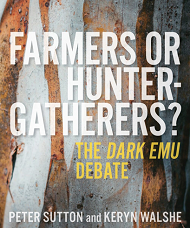 The Politics of Suffering was a whistle-blowing work that outlined clearly where optimism and ideological correctness had, on the ground, collapsed into high levels of community and personal violence, suicide and murder. Political theories and actions may have been correct, but the plight of actual individuals and communities invited publicity and new plans. Sutton experienced this at first hand and dared to ask whether any factors from the older ways contributed in some ways to emergent problems in post-mission settled communities. For some, to ask was to err.
The Politics of Suffering was a whistle-blowing work that outlined clearly where optimism and ideological correctness had, on the ground, collapsed into high levels of community and personal violence, suicide and murder. Political theories and actions may have been correct, but the plight of actual individuals and communities invited publicity and new plans. Sutton experienced this at first hand and dared to ask whether any factors from the older ways contributed in some ways to emergent problems in post-mission settled communities. For some, to ask was to err.
I stress the important etymological work in Sutton’s books. Close attention to the vocabulary range of Aboriginal languages is shown to be a basic presumption and research tool in the task of fairly and accurately describing what Aboriginal people believed and did, and how lives were lived in family and tribal groups. Sutton stresses the absence of a pre-colonial vocabulary for farming and settled agricultural life. This is one of the important ways Sutton questions Pascoe’s claims about farming by Aboriginal peoples: the sparsity or absence of a vocabulary and grammar of planting, harvesting and storing, gardening, horticulture and aquaculture.
Likewise, Sutton’s descriptions of research into actual artifacts, tools and implement usage by Aboriginal people leave Dark Emu with a long list of questions to address. Sutton opens up an actual world of the Old People and their ways that stands as a litmus test for many of Bruce Pascoe’s claims about the Aborigines as settled agriculturists or village-based farmers.
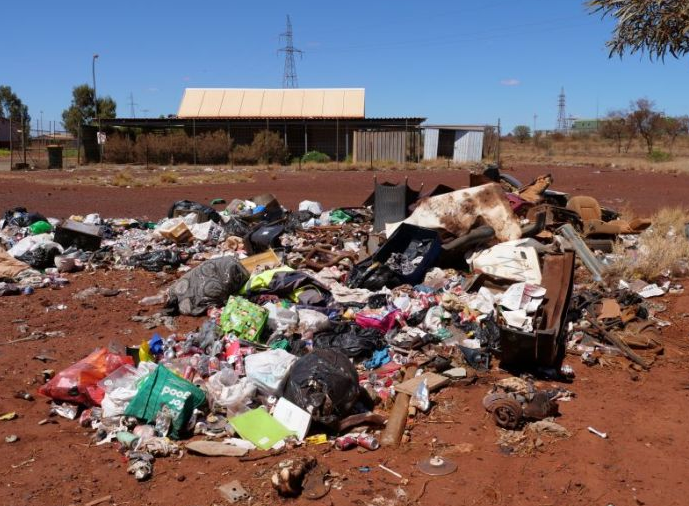
The Politics of Suffering challenged assumptions about the best ways to strengthen the actual circumstances of Aboriginal peoples. Sutton distinguished between the politicised processes which almost deduce that betterment must have and has happened because of political changes and commitments, and the facts on the ground that many communities and individuals had spiralled into greater difficulties, violence, illness, abuse, suicide and murder in the post-mission domain. Sutton’s work demythologised a cause and a politics and left large questions to be addressed with care.
The engine room for The Politics of Suffering lay in Sutton’s long-term relationship and friendship with the Wik people of Cape York, with individuals and families who had lived through the end of the mission times and on into the secular administrative life of the more recent world. He had been stunned by the realities on the ground since beginning his work there in the 1970s:
By 2000 Aurukun had gone from a once liveable and vibrant community, as I had first experienced it, to a disaster zone. Levels of violent conflict, rape, child and elder assault and neglect had rocketed upwards since the introduction of alcohol in 1985.
Discussing alcohol and individual liberty and its constraints is always difficult. Sutton’s professional experience led him to ask about any factors from pre-colonial times that might be inflammatory in the new circumstances of the post-mission era. In the afterword he notes:
The other main area of attack was probably the culture question. I was to be punished for daring to ascribe negative consequences to some Indigenous Australian practices that survived from the ancient past, including the legitimation of men’s violent power over their women, the part-persistence of a mobile forager health regime under the dangerous epidemiological conditions of settlement, and a customary permissiveness in the raising of children that at times included a casualness about their health. I never said these were simple, unqualified continuities with the pre-colonial past, though some have imagined this.
One could again divert here into the gap between success at the level of theory or ideology and the measurement of any actual changes or realities in individual lives or a common good. I first encountered that in the 1970s when a Hungarian Australian philosopher discussed the differences between the then Fiat 1600 made according to the best socialist or even soviet principles and a Fiat 1600 made by the capitalist workers in Milan. One was made by the best ideological principles, and one was a good car.
Promoters of closing-the-gap funding initiatives should master a reading of The Politics of Suffering with a view to pressing closely on the empirical and holistic measurement of actual results (humanitarian outcomes) in the well-being of individuals and communities. Communities are not large conurbations. Residents could be known by name.
Peter Sutton is a Fellow of the Academy of Social Sciences in Australia. The cover of Farmers or Hunter-Gatherers? tells the reader that he is “a social anthropologist and linguist who has, over more than fifty years, contributed to learning and recording Aboriginal languages, promoting Aboriginal art, mapping Aboriginal cultural landscapes, increasing understanding of contemporary Aboriginal societies and land tenure systems, and the succession of native title claimants”. The brief note on Dr Walshe stresses her credentials in the micro task of specific archaeological investigations. Both authors write with caveats and caution about what has been or can be proven about many aspects of earliest pre-colonial Australia. In one place, Sutton indicates that it is the lack of caveats (prudential caution about what data or a datum means) that concerns him about Bruce Pascoe’s approach.
To find examples to illustrate this point, the reader can turn to the luminous discussions of the topic “Ancient occupation” (Farmers or Hunter-Gatherers? pages 170 to 175) and read the material about the Hopkins River (Moyjil) midden in Victoria, and the two or three stone implements found on Rottnest Island, Western Australia. (It is not clear that the three objects are all implements.) Both sites involve snail shells and what they mean. It is about the data. The Moyjil midden involves large numbers of wavy periwinkle shell (Lunella undulata) and the Rottnest find is a single example of a land snail found in proximity to the three stone objects. Both discussions are helped by one further variable noted in the dating of sites. At the same time, middens can only be evaluated with allowances for wind and erosion studies, and the role of bird-life and fires not lit by humans.
A single snail probably has no inferential force, no counterfactual capacity to overthrow the thesis. The solitary land snail from Rottnest remains ambiguous at the bar of inquiry.
In many places, Sutton states that Pascoe has taken extreme or outlier cases, over-emphasised them or partly misdescribed them, and then taken them as normative for the whole story. That can be evaluated without rancour. Farmers or Hunter-Gathers? is a courteous book, though it does not pull its punches. Its comments are factual or about the putative facts, not about the personal or the pejorative. It invites Pascoe to the table of discussion and hard-headed debate about points of detail and interpretation. It has about it the courtesy but steely purpose of the senior research seminar in a good university where anything can be fairly discussed and where the facts are to speak for themselves.
Sutton goes out of his way to find some good things to say about Bruce Pascoe’s runaway success in Dark Emu, but this courtesy is not a substitute for actual dismantling of Dark Emu’s main theses and data uses. By the time Farmers or Hunter-Gatherers? concludes, the good in Dark Emu is severely circumscribed and curtailed.
Sutton shows that Pascoe is selective in his use of the writings of colonial explorers and uses partial quotations to bolster what becomes an eccentric use of what is there in the explorers’ texts. Similarly, he says Pascoe makes eccentric use of rare or very occasional “facts of circumstance” to extrapolate to sweeping claims about a widespread and normative pattern. Pascoe does not acknowledge difficulties or research that contradicts his conclusions. He takes small, contested matters as certain and contrarian facts in a landscape where a different conclusion may be warranted.
Pascoe chooses the unlikely and the highly unlikely where they seem to promote an elevated (according to his measure of “elevated”) view of Aboriginal people—either by extending their occupancy of the land out to 80,000 or even 120,000 years, or giving them a false elite status as sedentary farmers exhibiting village life with general construction of stone dwellings. Sutton shows definitely that the true worth of the Old People lies in other measures and criteria and that the presumption of stone dwellings is not sustained by the evidence. Sutton is blunt in his response to Young Dark Emu, which popularises Dark Emu for school children. A yarn is one thing. A hard-won history based in fact is another.
Chapters in Farmers or Hunter-Gatherers? are titled: The Dark Emu debate; Spiritual propagation; The language question; Ecological agents and “firestick farming”; Social evolutionism rebirthed; The agriculture debate; Patterns of apparel; “Aquaculture” or fishing and trapping?; Dwellings; Mobility; The explorers’ records; “Agricultural” implements and antiquity; Stone circles and “smoking” trees. Two appendices follow: When did Indigenous people arrive in Australia?; Band movements recorded by William Buckley.
Each of these chapter headings outlines an area of disciplined inquiry with more and more criticism of Dark Emu’s claims and conclusions. The chapters work by consistent, detailed inquiry, drawing the reader to the micro, even nano level. In one place we are left pondering the significance or insignificance of a single land-snail shell. In another place we are pondering the assertion that widespread smoking of eels was carried out inside hollowed gum trees. Sutton’s handing of the balance between theory, method of inquiry and caution in conclusion is masterly. It reads as a cautionary against taking many claims in Dark Emu at face value.
In the chapter “Spiritual propagation”, Sutton focuses on what pre-colonial relationships were with the biota and with all that counts as food derived from plants and animals. The culture is not Ag Science 101 with a settled agriculture, aquaculture, food storage and sedentary village life settled around penned-animal husbandry, ploughing and sowing of selected seed. Neither need it be for dignity and value and land-rights to be established. The culture is rather a customary and symbolic participation in rites of plenty in harmony with what has always been provided in a biota that can more or less be hoped to remain constant across the passage of time and was intact at the time of colonisation. One might say that the staples of life were transcendentally elicited from the Dreaming and manifest in places of significant yield and supply and were accompanied by a long and passed-on history of practical knowledge and custom. “Hunter-Gatherer-Plus” insights are essential in pragmatic ways to support this.
It seems that the Aboriginal life did not separate the sacred from the secular nor divide the disciplines into stand-alone sciences, separate from each other and fire-walled from religion. Perhaps some of Les Murray’s thoughts help—referring to the Big Poems that sign into primal realities and his metaphors of “whole-speak” versus “narrow-speak”—important as each may be in differing domains. Somewhere, Murray says that before colonisation, it was as if the life of the Old People was one Big Poem; which may be another metaphor for the sacred Dreaming.
Sutton is averse to a social-evolutionary ladder that ranks levels of advancement, proto this or incipient that. It is not as if the Aborigines were backwards and waiting for advancement, or even equivalents to British agriculture. These are not the correct alternatives, not the correct “either/or”. It may be unavoidable that this is how British explorers tended to see and evaluate the Aborigines, bringing as the colonials did the century of Darwin’s evolutionary theories and industrial revolution “progress” to a new landscape and setting. Some representatives of the empire thought that the British were the top rung on an evolutionary ladder, as some still do.
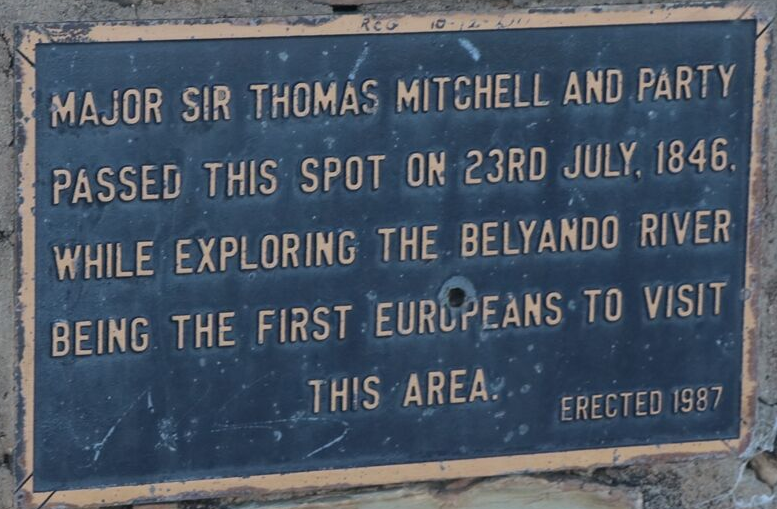
Sutton suggests that one of Pascoe’s shortfalls emerges in his attribution of gospel status to the white explorers’ texts and their vanguard quest for the very agricultural opportunities in question. Sutton is adamant that Pascoe quotes selectively from the explorers’ works, omitting adjacent data that simply does not fit his thesis. The chapter on building types illustrates this.
To the best of my knowledge, Sutton avoids the question of Bruce Pascoe’s Aboriginal identity. It is a non-issue in the specific field of Pascoe’s beliefs and conclusions about Aboriginality and the identity of the Old People. “Aboriginality” does not contribute to the quiddity of Pascoe’s arguments. However, his lack of close engagement with the anthropological sciences and close field work scholarship amongst Aboriginal people is a criticism levelled at Pascoe. Sutton is saying that close acquaintance with the world of the Old People as it may be expressed in parts of Australia is vital to research. He seeks to show that Pascoe’s accounts of Aboriginal life before colonisation are in principle and in detail too driven by the colonial interpreters.
At one point I set out to count in the page margins the number of times that Sutton points out mistakes in Dark Emu in methodology, matrix of inquiry and over details and what they mean. I gave up the count when so many pages in my copy were annotated, and sometimes with multiple exclamation marks to indicate the scale and significance of mistakes. The reader can traverse that route.
Sutton makes his own recommendations about the best sweep of future developments about the complex of relationships between the peoples who make up modern Australia. On native title, Sutton says, “Pascoe here has the facts completely inverted.” Sutton shows that it is not the case that categorising Aboriginal people as “hunter-gatherers” is “prejudicial to the rights of Aboriginal people to land”. Dark Emu, however well-intentioned, is a “popularised mythology of history”:
we have grappled with Dark Emu’s mixture of positive factual information and its tendency to trim the evidence to fit the author’s model, its lack of true scholarship, its ignoring of Aboriginal elders’ knowledge, its disturbing social evolutionist philosophy, and its overwhelming attention to the material aspects of Aboriginal food production to the exclusion of the rich spiritual propagation philosophy of the Old People’s culture.
Sutton has issued an invitation to those with the opportunity and the interest to turn micro-attentively to the large archive of factual claims and history of research he draws on and discusses and form a more considered view of whether Dark Emu is a narrative at the historical bedrock or a story not immersed in the literal micro-truths of a past—a past with immense momentum for Australia today, an Australia still immersed in a politics of suffering when it comes to the prior inhabitants of the continent, the Aborigines or Old People.
Is there a continuity between Farmers or Hunter-Gatherers? and The Politics of Suffering? Both display an intense drive to sift fact from fiction and to arrive at the more likely truths about Aboriginal Australia and how it might be celebrated today by the accurate description of historical realities. Both are concerned with measures of well-being and with effective redress. Both are concerned with what the sociologist Peter Berger once described as the task of sociology “to disperse or penetrate the smokescreens that cloud reality”.
That the task of objective humanism and humanising that marks The Politics of Suffering has not concluded can be seen today, twelve years after its publication. A net search for the terms: “APY sexual abuse children” brought up: Mullighan, E. P. (2008b) “Children on Anangu Pitjantjatjara Yanjunytjatjara (APY) Lands commission of inquiry: A report into sexual abuse”. One then jumps six years to add Alex Mann’s ABC report of August 2014, “Child sex abuse cases in remote APY Lands being left unanswered for months”. Moving straight to July 2021 (now covering a time frame of thirteen years) we note a report that presents as a concern about the reduction in mental health services to the APY lands and to the children in particular. This reduction is to be brought about by a move to replace two resident social workers with a fly-in-fly-out model. On the surface the reduction of mental health services seems to be a stand-alone issue but Patrick Martin’s ABC story “APY Lands elders worry about cuts to key mental health service for young people” goes on to say:
Some of Australia’s most vulnerable Aboriginal communities are worried they could be left without permanent on-country mental health staff for young people, despite nearly 1000 reports of child abuse being made in the region in the past two years.
I note the 2016 census return for the APY lands. It shows a total of 2276 residents, mostly living in five towns with populations ranging from 189 to 455, with another 470 people distributed in smaller settlements. Eighty-four per cent of the population are indigenous Australians and in total the community is identified as 511 families. Children (up to fourteen) make up 24 per cent of the population or 546 persons while the median age is given as twenty-eight.
There must be a deeply challenging correlation between the figure given in Martin’s news story. Children do not cease to be children at the age of fourteen but if one were to take the liberty, one could begin by noting that the 947 alleged abuses focus on the tiny cohort of 546 persons. Challenging and disturbing as this is, it is consistent with Martin’s further note that “A report tabled in the South Australian Parliament covering part of that same period said that ‘80 per cent of children in the APY Lands have exposure to or continue to experience problem sexual behaviour’.”
These reports run from 2008 to 2021 as if in a field of inertia and as a re-ringing of the warning bell that Sutton sounded in 2009 in The Politics of Suffering. It really is as if nothing can happen, nothing effective. Why? This inertia itself invites the highest scrutiny, reflection and apt responses of the kind Sutton invited.
Sutton acknowledges that Dark Emu can and should provoke further study, reflection and conversation. The field is enormous, as my preface remark from James McAuley shows. It led me to watch with increasing fascination and interest the four-part 2013 documentary First Footprints. Here is one descriptor from that profound documentary:
Episode 4: The Biggest Estate (Sustainably transforming an entire continent, 9000 years ago—1788) When much of the world embraced agriculture the first Australians rejected it. They chose instead ingenious land management systems like fire stick farming to transform the harshest habitable continent into a land of bounty.
One of the many significant moments in the series was when Dr Scott Cane took the camera deep into Koonalda Cave, tracking the songline of APY men in that part of the Nullarbor Plain. This seemed to suggest a domain of great difference to the nineteenth-century explorers and colonists, one to provoke a deeper imaginative quest. There are points where the foundations of Western and Aboriginal culture meet, and the darkness of the cave can be one of them.
Farmers or Hunter-Gatherers? The Dark Emu Debate
by Peter Sutton and Keryn Walshe
Melbourne University Press, 2021, 264 pages, $34.99
Ivan Head studied philosophy at UWA and Melbourne and holds a PhD from Glasgow University
Madam: Archbishop Fisher (July-August 2024) does not resist the attacks on his church by the political, social or scientific atheists and those who insist on not being told what to do.
Aug 29 2024
6 mins
To claim Aborigines have the world's oldest continuous culture is to misunderstand the meaning of culture, which continuously changes over time and location. For a culture not to change over time would be a reproach and certainly not a cause for celebration, for it would indicate that there had been no capacity to adapt. Clearly this has not been the case
Aug 20 2024
23 mins
A friend and longtime supporter of Quadrant, Clive James sent us a poem in 2010, which we published in our December issue. Like the Taronga Park Aquarium he recalls in its 'mocked-up sandstone cave' it's not to be forgotten
Aug 16 2024
2 mins







